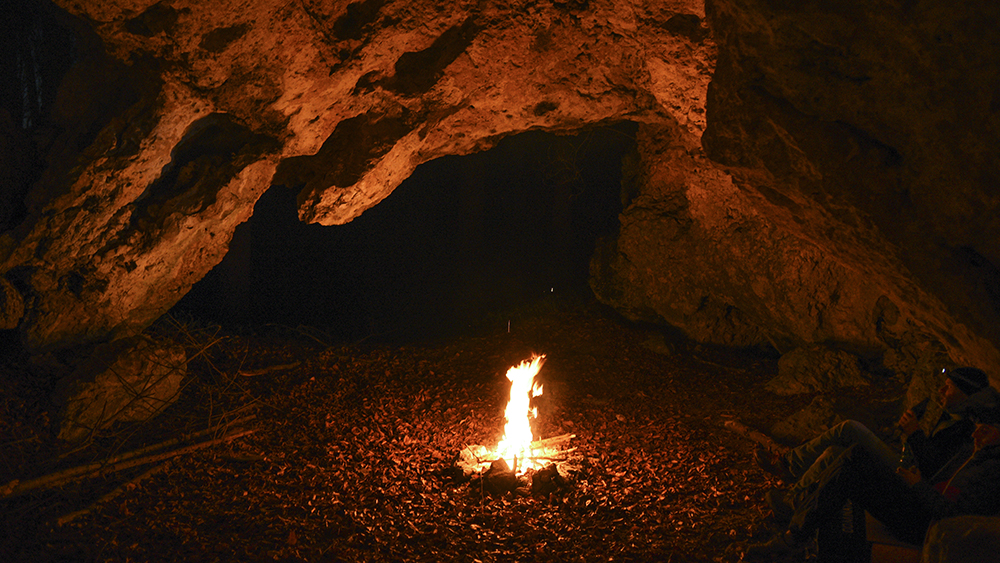A recent study making the news involves the reconstruction of the facial features and anatomy of the enigmatic humans known as the Denisovan from genetic data.1 In the evolutionist’s own words who did the study, “Denisovans are an extinct group of humans.” And the scientists’ research shows exactly that.
Denisovan fossils are represented by only a few teeth, a finger bone, a bit of a mandible (jawbone), and either a leg or an arm bone fragment. These isolated bits and pieces have been found in two locations. One was a Russian cave in the Siberian Altai Mountains close to the borders of Kazakhstan, China, and Mongolia. The other location was farther south in a cave on the Tibetan Plateau. From these teeth and bone fragments, DNA has been sequenced and compared to modern human groups.
Denisovan DNA is distinctly human and has been found to be most closely related to people groups across Asia, including Southeast Asian islands. Denisovan DNA, like Neanderthal DNA, is now considered to be nothing more than another variant of the human genome. In fact, evolutionists now widely acknowledge that anatomically modern humans, Neanderthals, and Denisovans interbred with each other.
While the Neanderthal people were known for having large brains, prominent brow ridges, and sloping foreheads (traits still found among modern humans),2 very little is known about what Denisovans looked like because of the limited amount of fossil material. Now, using a combination of epigenetics (chemical tags on the DNA) and genetics, scientists are attempting to reconstruct what a Denisovan might have looked like. And no surprise, the reconstruction looks fully human.1 The researchers claimed that the reconstructed female Denisovan had an elongated face and a wide pelvis, like Neanderthals, but also had a laterally wider head.
As is typical with evolutionists, they take information from a single individual and then make broad extrapolations to entire populations. The approach of taking DNA data and then inferring what someone looks like from epigenetic modifications still remains to be definitively proven as a valid methodology. However, one thing we do know for sure: This is just one more study showing that humans have always been humans.
References
1. Gokhman, D. et al. 2019. Reconstructing Denisovan Anatomy Using DNA Methylation Maps. Cell Press. 179 (1): 180-192.
2. Tomkins, J. P. 2019. Recent Humans with Archaic Features Upend Evolution. Acts & Facts. 48 (4): 15.
Dr. Tomkins is Life Sciences Director at ICR and earned his doctorate in genetics from Clemson University.

Denisovan Epigenetics Reveals Human Anatomy
The Latest
Puzzling Fossils at an Unlikely Time
Wherever and whenever life is found, it is incredibly complex. This certainly applies to cyanobacterial photosynthetic life that supposedly were some...
CREATION PODCAST
A Theory Designed to Be...Anti-Design | The Creation Podcast:...
Science is objective. At least, that’s what we’re told. But there are inherent issues with this statement that can...
Seeing the Case for Creation in Fruit Flies
Our brain is designed to smoothly and constantly process what we see via the incredibly sensitive photoreceptors (cones and rods) of our eyes.1...
Amazing Defense Systems
Bacteria (prokaryotes) are ubiquitous. A fraction cause disease in people, animals, and plants, but the majority are the foundation for the global food...
Octopus and Fish Plan a Complex Coordinated Hunt
The octopus—an invertebrate—never fails to surprise researchers with its incredible abilities.1,2
The octopus was designed...
A ''40 million year old'' 100% European Gnat
Finding well-preserved creatures in amber1 is a landfall for creation scientists, much like the numerous discoveries of soft dinosaur tissue...
CREATION PODCAST
The Undeniable Power of Narrative | The Creation Podcast: Episode...
Science is objective. At least, that’s what we’re told. But there are inherent issues with this statement that can cause...
Paintbrush of the Creator
Who doesn’t enjoy the amazing color patterns of butterflies?1,2 Such beautiful designs and construction do not reflect blind naturalistic...
November 2024 ICR Wallpaper
"Rejoice always, pray without ceasing, in everything give thanks; for this is the will of God in Christ Jesus for you." (1 Thessalonians 5:16-18 NKJV)
ICR...













